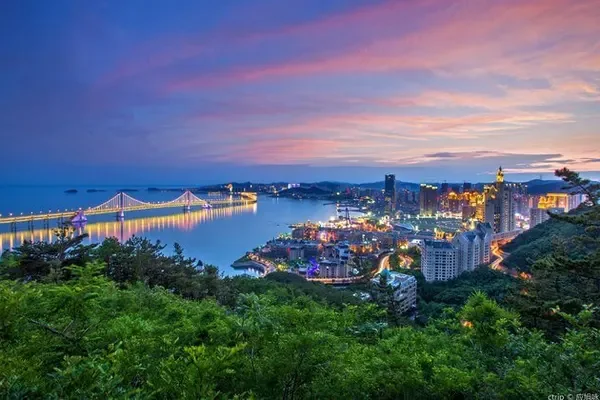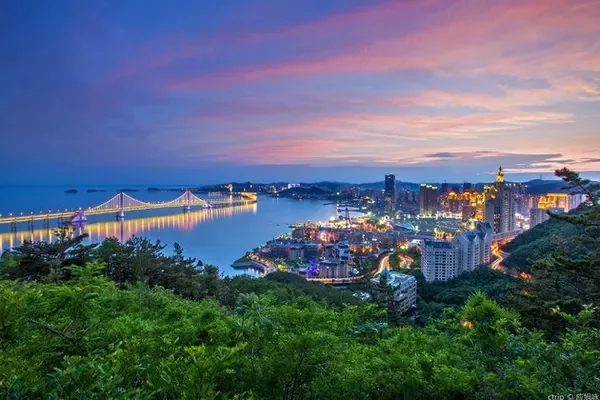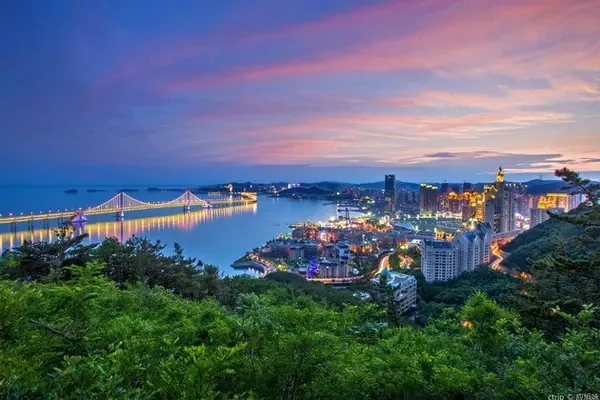Northern Xinjiang Raiders
Seven Wonders - Spring Tour to Northern Xinjiang (Pingshui Rhyme)
2019.4.2
When the snow is gone, the herding horses fly at the border,
Where the apricot blossoms bloom, the geese return to the south.
You Xing should not follow the cold spring,
As far as the Tianshan Mountains, Jing Cuiwei,
In the northern Xinjiang of the motherland, there is a piece of pure land that occupies one-sixth of China's land area. It is far away from the hustle and bustle of the city. It has the highest peak and the lowest depression in China that is 154 meters below sea level; it has the most national nature reserves, national geological parks, and national 5A-level tourist attractions, which are poetry and distant places in the hearts of travelers. So in early April this year, I had my first close contact with Xinjiang.






Raiders:
D1: Changsha fly - Urumqi
Check in the hotel after arriving.
D2: Urumqi-Yining
Take a 9-hour drive to [Salimu Lake], known as "Jinghai" in ancient times, is located in the North Tianshan Mountains in Bole City, Boertala Prefecture, Xinjiang, China. The place where the wet air flow lasts is called "the last tear of the Atlantic Ocean",
[Guozigou] is the throat of the North New Road of the Silk Road leading to Central Asia and Europe in ancient my country. It is known as "Tieguan" and "the first scene in Ili". [Saiguo Expressway Bridge] The first cable-stayed bridge with twin towers and double cable planes and steel truss girders in the country, and the first expressway in Xinjiang that runs through the Tianshan Mountains and is connected by bridges and tunnels.
Check in to your hotel in Yining
D3; Yining-Xinyuan
Take a 5-hour drive to [Turgen Apricot Blossom] Turgen Apricot Blossom -- CCTV aerial photography of China's Ili ten thousand mu apricot blossom, which is the largest primitive wild apricot forest left over from the Middle Ages. It's just romance, which can bring you infinite shock.
Return to Xinyuan County in the afternoon and check into the hotel.
D4: Xinyuan-Yining
Take a 2-hour drive to the famous pasture of [Nalati Grassland], which has flat river valleys, high peaks, deep gorges, and lush forests. Along the way, you can see the vast grasslands, herds of cattle and sheep, green mountains and green waters, and enjoy the beautiful scenery of Jiangnan outside the Great Wall.
Return to the hotel where you stayed in Yining
D5: Yining - Urumqi
Take a 9-hour drive to [Anjihai Grand Canyon], also known as Anjihai Grand Canyon. After hundreds of millions of years of river rushing, rain erosion, and wind and snow erosion, the cliffs on both sides present a majestic picture of natural landforms. Very shocking.
People live in Urumqi
?D6: Urumqi-Turpan
Drive for 4 hours to Turpan. Upon arrival, visit [Kanat] Kanerjing, the Great Wall, and the Beijing-Hangzhou Grand Canal are known as the three major projects in ancient China, and are also known as "the blood of life in extremely arid areas". [Flame Mountain] Known as Chishi Mountain in ancient times, it is located on the northern edge of the Turpan Basin, on the northern route of the ancient Silk Road. In midsummer, under the scorching sun, the reddish-brown mountain is shining brightly with sandstone, and the fiery air is rolling up like a blazing flame, so it is also called "Flame Mountain".
Return to Urumqi
D7: Urumqi - Tianchi
Take a 2-hour drive to Tianshan Tianchi [Tianshan Tianchi Scenic Area] Tianchi is located on the north slope of Bogda Peak. With Tianchi as the center, Tianshan Tianchi integrates forests, grasslands, snow-capped mountains, and cultural landscapes into one, forming a unique landscape feature. .
Return to Urumqi
D8: Urumqi to Changsha
Travel preparation Light feathers, sunglasses, rain gear, sun hat, inflatable headrest, anti-motion sickness medicine,
Sailimu Lake
Sailimu Lake, known as "Clean Sea" in ancient times, is the place where the warm and humid Atlantic air flow lasts, and there is a saying that "the last tear of the Atlantic Ocean". It is the alpine lake with the highest altitude and the largest area in Xinjiang. Located in the North Tianshan Mountains in Bole City, Xinjiang, the lake is 2071 meters above sea level and covers an area of 453 square kilometers. At the beginning of April, Sailimu Lake was frozen for ten miles. The Jinghai Ice Embankment is a winter wonderland of Sailimu Lake. The lake water presents a strange state of being frozen in waves.









Guozigou Bridge
The Guozigou Bridge was built in August 2007. The total length of the bridge is 700 meters, and the height of the bridge deck is 200 meters from the bottom of the valley. The main bridge of the bridge adopts a steel truss girder structure. It is the first steel truss girder cable-stayed bridge with two towers and two cable planes in China. The bridge connects Sailimu Lake to Guozigoukou Expressway on National Highway 045, and is an important passage from Urumqi to Yining.








xinghuagou
Xinjiang Xinghuagou is located in Turgen Township, Xinyuan County, Yili, Xinjiang. This is the largest primitive wild apricot forest left over from the Middle Ages. It is distributed on the north bank of the Gongjisi River, covering an area of more than 30,000 mu. It is one of the areas where wild apricot forests are concentrated in Xinjiang. The apricot blossoms in Yili Turgen usually bloom from early to mid-April, and the flowering period is about seven days. At the beginning of April, it was raining in spring, and pink petals hung all over the branches. When you climbed to the middle of the mountain, it was thick and foggy, and Xinghuagou was looming.








Nalati Grassland
The Nalati Grassland is located in Xinyuan County, on the northern slope of the Chulute Mountain, where there are lush mountain meadows of the slender-stemmed iris group. Other associated species mainly include asparagus, false gentian, sedge, wheatgrass, fescue, strawberry and thyme. There are undulating mountains and green grass here, with both the vastness of the grassland and the softness of the stream. In the vast desert of Xinjiang, Nalati is like a piece of emerald inlaid on yellow silk, which is particularly dazzling. All kinds of wild flowers bloom all over the hills, colorful in red, yellow, blue and purple, embellishing the grassland gorgeously. Nalati has a profound historical and cultural heritage, and its culture can be traced back to more than 3,000 years ago. It has successively experienced the cultural periods of the Cypriots, Wusuns, Huns, Turks and Mongolians.








Anjihai Grand Canyon
Anjihai Grand Canyon is located in the geological fault zone at the northern foot of Tianshan Mountain, west of Anjihai Town, Shawan County. The Anji Haihe River originates from the Tianshan Mountains and has been scoured for many years. The river water cuts out thousands of feet of cliffs and valleys north of Yuanxing Palace, forming a rare plain in the history of landforms, dangerous passes and strong deep stretches. At present, there is no mature tourist attraction, and it is an original ecological natural landscape.








Turpan
Turpan is located at the southern foot of Bogda Peak, a branch of the Tianshan Mountains, with a terrain high in the north and low in the south. Huoyan Mountain traverses the central part of the basin from west to east. The climate is dry and rainless, and the solar radiation is strong. It is known as "Fire Island". It is rich in grapes, watermelons and other fruits, and is well-known as the "City of Grapes". The Flame Mountain, full of myths and legends, and the magnificent man-made underground river Karez have become a collection of historical heritage and a museum of natural geography, making tourists linger and forget for a lifetime.








Tianshan Tianchi
Tianshan Tianchi, known as "Yaochi" in ancient times, is located in Fukang City, Xinjiang, on the mountainside of the northern slope of Bogda Peak. It is a natural scenic spot centered on alpine lakes. Tianchi Lake is 1910 meters above sea level, 3.5 kilometers long from north to south, 0.8 to 1.5 kilometers wide from east to west, and the deepest part is 103 meters. The lakeside is surrounded by spruces, the snow peaks shine, the clear water looks like a mirror, and the scenery is picturesque. Tianshan Tianchi is characterized by a complete vertical natural landscape belt, snow-capped mountains, glaciers, and alpine lakes. It takes the myth of the Queen Mother of the West in the ancient Yaochi Lake, religion and unique ethnic folk customs as its cultural connotations. The best place for sightseeing.








Xinjiang Cuisine
Xinjiang cuisine is mainly based on Halal cuisine. Most of them eat beef and mutton. Most of them are made by frying, roasting, rinsing, roasting, sauce, grilling and steaming. , Nang, kebabs, pilaf, noodles, etc., the taste is hot and sour.








conclusion
The beginning of April is not the best time to travel to Xinjiang. For eight days, you can only take a quick look at the flowers. Although you can glimpse the tip of the iceberg on the snow-covered plateau, you have nothing to do with the charming scenery of the south of the Yangtze River. There are so many famous historical and cultural cities in the vast Xinjiang. 5A-level tourist attractions, national-level scenic spots, national geological parks, national forest parks, national nature reserves, and national wetland parks. We look forward to crossing the Tianshan Mountains, constantly integrating, feeling, appreciating, and savoring. ·····


